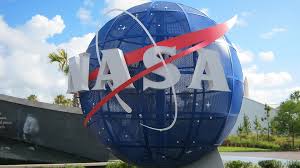
Breaking News
 Over 30 years to bring common sense back to America.
Over 30 years to bring common sense back to America.
 New battery idea gets lots of power out of unusual sulfur chemistry
New battery idea gets lots of power out of unusual sulfur chemistry
 Next Issue Of The Wild Bunch: AI Threats Patriots Should Prepare For
Next Issue Of The Wild Bunch: AI Threats Patriots Should Prepare For
 A Mortician Explains Why This Photo Doesn't Make Sense
A Mortician Explains Why This Photo Doesn't Make Sense
Top Tech News
 Kawasaki's four-legged robot-horse vehicle is going into production
Kawasaki's four-legged robot-horse vehicle is going into production
 The First Production All-Solid-State Battery Is Here, And It Promises 5-Minute Charging
The First Production All-Solid-State Battery Is Here, And It Promises 5-Minute Charging
 See inside the tech-topia cities billionaires are betting big on developing...
See inside the tech-topia cities billionaires are betting big on developing...
 Storage doesn't get much cheaper than this
Storage doesn't get much cheaper than this
 Laser weapons go mobile on US Army small vehicles
Laser weapons go mobile on US Army small vehicles
 EngineAI T800: Born to Disrupt! #EngineAI #robotics #newtechnology #newproduct
EngineAI T800: Born to Disrupt! #EngineAI #robotics #newtechnology #newproduct
 This Silicon Anode Breakthrough Could Mark A Turning Point For EV Batteries [Update]
This Silicon Anode Breakthrough Could Mark A Turning Point For EV Batteries [Update]
 Travel gadget promises to dry and iron your clothes – totally hands-free
Travel gadget promises to dry and iron your clothes – totally hands-free
 Perfect Aircrete, Kitchen Ingredients.
Perfect Aircrete, Kitchen Ingredients.
 Futuristic pixel-raising display lets you feel what's onscreen
Futuristic pixel-raising display lets you feel what's onscreen
NASA readies probe to touch the sun with 'cutting-edge heat shield'

For the first time in human history, we are going to "touch the sun".
As NASA prepares for an Aug. 4 launch, it has unveiled a "cutting-edge heat shield", installed on June 27, that will keep the spacecraft from being burnt to a crisp.
The probe's mission will take it within 4 million miles of the sun, a region of space never before visited by a human-made spacecraft. For comparison's sake, the closest that Mercury ever gets to the sun is approximately 29 million miles. Getting that close to what is, essentially, a giant ball of fire requires some significant enhancements.
That's where the Thermal Protection System comes in.



